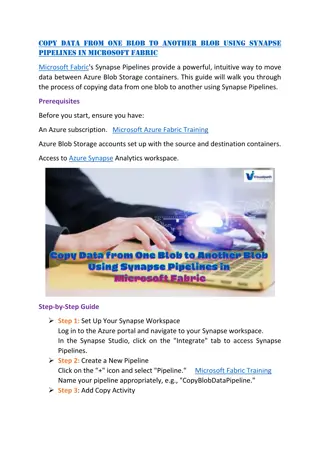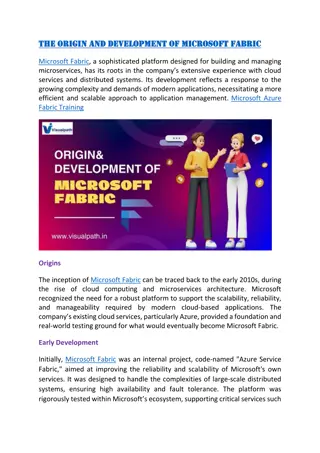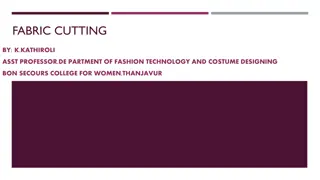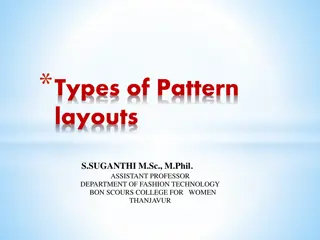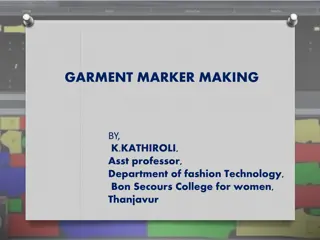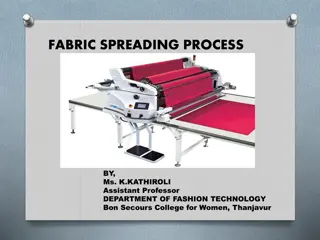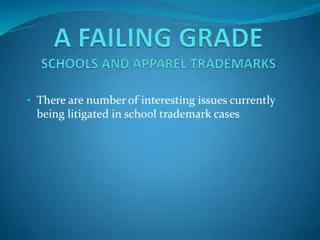Understanding Fabric Spreading Process in Apparel Industry
Fabric spreading is a crucial process in the apparel industry where fabric is cut into specific lengths and layered to form plies. The process involves aligning fabric ply, maintaining correct tension, ensuring flatness, eliminating flaws, and more. Manual and mechanical spreading methods are commonly used, with manual spreading being suitable for smaller production runs. Workers play a key role in the fabric spreading process by carefully laying down fabric plies and ensuring even tension and alignment. Watch a manual fabric spreading process in action to visualize the steps involved.
Download Presentation

Please find below an Image/Link to download the presentation.
The content on the website is provided AS IS for your information and personal use only. It may not be sold, licensed, or shared on other websites without obtaining consent from the author. Download presentation by click this link. If you encounter any issues during the download, it is possible that the publisher has removed the file from their server.
E N D
Presentation Transcript
FABRIC SPREADING PROCESS BY, Ms. K.KATHIROLI Assistant Professor DEPARTMENT OF FASHION TECHNOLOGY Bon Secours College for Women, Thanjavur
SPREADING Spreading is the process during which fabric is cut into pieces of a specific length which are then placed on top of each other to form several plies The length of a ply is determined by the shape, size and the number of the components which are to be cut from it
Requirements of Fabric Spreading O Alignment of fabric ply, O Correct ply tension, O Fabric must be flat, O Elimination of fabric flaws or defects, O Correct ply direction and lay stability, O Elimination of static electricity, O Easy separation of the cut lay into bundles, O Avoidance of fusion of plies during cutting O Avoidance of distortion in spreading, O Matching the checks and stripes.
METHODS OF FABRIC SPREADING METHODS OF FABRIC SPREADING Manual Spreading Process Manual Spreading Process Mechanical Spreading Process Mechanical Spreading Process
Manual Spreading Manual Spreading Process Process O Fabric is completely laid by Hand O With the help of mechanical assistance as roller cutter O With the help of manually operated spread truck O This is most extensively used for smaller production
Working procedure O The fabric spreading process is carried out by one/two workers at each side of the spreading table who move the fabric ply to the beginning of a spread. O The end of the fabric ply is placed precisely at the beginning of the spread and secured. O Returning to the initial position (the place where the fabric roll is fixed) one worker aligns the laid down fabric ply with the edge of the table and the previously spread fabric plies with a permitted variant of +/-0.5 cm. O The second worker smoothes the surface of the ply, ensures an even tension in the fabric and prevents creases or folds appearing during the spreading process. O The spreading process is repeated until the desired number of fabric plies are laid down.
Manual Spreading Manual Spreading Process Process Fabric Spreading Process in Apparel Industry - Fashion2Apparel manual fabric spreader - YouTube
Contd. Advantages of manual Spreading Process Advantages of manual Spreading Process Convenient for small scale industries Low investment Disadvantages of manual Spreading Process Disadvantages of manual Spreading Process Time consuming Low speed Requires skilled Labour
Mechanical method O Semi-automated Spreading Process O Automated Spreading Process
Semi-automated Spreading Process O In a semi-automated spreading process, the operator moves along the spreading table and follows the spreading process. O The operator smoothes the surface of the lay, recognises faults in the spread fabric and makes decisions to leave faults in the spread or cut them out
SEMI AUTOMATIC SPREADING MACHINE Fabric Spreading Process in Apparel ,advantages disadvantages
Semi-automated Spreading Process ADVANTAGES O Fast & Economical O Proper selvedge alignment O Ease to operate with electronic Clutch Disadvantages O Fabric Loading & Cutting is Manual O Not suitable for Large Scale Manufacturing
FULLY AUTOMATIC FULLY AUTOMATIC SPREADING PROCESS SPREADING PROCESS The fully automated spreading process is used for high quality materials which are easily spread. An operator sets the necessary parameters (the length of the lay, the spreading speed, the fabric tension, etc.). The spreading machine automatically performs the following operations: lays the fabric in the required length of the spread, cuts the material at the end of every ply, counts the number of plies and stops after laying the required number of plies.
FULLY AUTOMATIC SPREADING FULLY AUTOMATIC SPREADING MACHINE MACHINE Automatic spreader Flash
Comparison of manual and automated spreading processes: Comparison of manual and automated spreading processes: Parameters Parameters Manual spreading Manual spreading Automated spreading Automated spreading Spreading equipment Spreading table Fabric feeder Cutting device Spreading table Spreading machine Spreading principles Spreading of pre-set number of plies Visual flaw identification by an operator Splicing manually using on the table marked splice marks and printed markers Spreading of pre-set number of plies Visual flaw identification by an operator Splicing using registered data about flaw placements and special software
Parameters Parameters Manual spreading Manual spreading Automated spreading Automated spreading Spreading method All kind of fabrics manually High-quality easy spread fabrics fully automated way Advantages of the method Ability to spread all kind of materials Low expenses High productivity Only one operator needed Low work load for an operator Disadvantages of the method Low productivity Two operators needed High work load for an operator High expenses Cannot spread materials with intricate patterns












